Why Price Kills Sales: The Power of Value-Based Selling to Win Loyal Customers 💡
Value-based selling is no longer just a buzzword — it’s the secret weapon of today’s top-performing sales teams, solo entrepreneurs, and growing businesses. In a marketplace flooded with copycat products and price wars, the brands that thrive are the ones that sell outcomes, not just features. If you’re tired of hearing “it’s too expensive” or losing deals to cheaper competitors, it’s time to flip the script.
This guide breaks down everything you need to know about value-based selling — from understanding what customers truly care about to handling price objections without discounting your worth. Whether you’re a beginner looking to build your first sales strategy or a business owner ready to scale smart, you’ll find practical insights, updated tools, and battle-tested tactics that work in 2025 and beyond.
Let’s dive into how you can stop competing on price and start selling what really matters: the value you deliver. 💡
🧭 Table of Contents:
- 💭 What Is Value-Based Selling and Why It Beats Competing on Price
- 🔍 Finding What Customers Truly Value (Beyond Features)
- 🧠 Psychology Hacks: How Buyers Really Decide What’s Worth It
- 🧬 Segmentation Secrets: Matching Value to the Right Audience
- 📣 Crafting Messages That Sell Value, Not Just Specs
- 💡 Developing Products with Real-World Value in Mind
- 💰 Smart Pricing: Charging What You’re Worth
- 🧾 Handling Price Objections Without Cutting Your Price
- 💬 Mastering Consultative Sales for Long-Term Trust
- 📊 Measuring Success in Value-Based Selling
- 🔧 Tools and Tech to Make Value-Based Selling Scalable
- 🚀 Final Takeaway: Focus on Value, Watch Your Sales Soar
💭 What Is Value-Based Selling and Why It Beats Competing on Price
In today’s ultra-competitive marketplace, selling on price alone is a dangerous race to the bottom. Products get commoditized, margins shrink, and loyalty fades fast. So what’s the smarter alternative? Value-based selling — a strategic sales approach focused on what your product or service does for the customer, not how much it costs.
What Exactly Is Value-Based Selling?
Value-based selling is about aligning your offer with what the customer values most, whether that’s saving time, increasing revenue, reducing stress, or achieving a specific goal. Instead of emphasizing discounts or features, you show how your solution solves real-world problems, improves outcomes, or creates measurable benefits.
It’s not about lowering your price — it’s about raising the perceived worth of what you offer.
Why Price-Based Selling Is Failing (And Fast)
Selling based on price alone might win you a deal today, but it’s rarely sustainable. Here’s why:
- 💸 Low-margin trap: Constant discounts kill profits
- 🔁 Easy to replace: Cheaper options pop up overnight
- 😐 No loyalty: Price-focused buyers switch as soon as a better deal shows up
- 🧱 Value is invisible: Customers don’t understand how your offer helps them — just how much it costs
If your only selling point is “we’re cheaper,” you’re just one competitor away from losing the deal.
Why Value-Based Selling Wins in 2025
Today’s customers are more informed and less tolerant of fluff. They want solutions that work, not just a good bargain. And they’re willing to pay more for a product that helps them grow faster, live easier, or win more often.
Here’s why value-based selling is gaining momentum in 2025:
- ✅ Trust over transactions: Consumers seek guidance, not pitches
- 🚀 Value equals impact: Buyers evaluate ROI, not specs
- 🤝 Loyalty grows from results: Clients stay when they see real outcomes
- 💼 Business buyers want transformation: Not just tools, but progress
2024–2025 Real-World Example
💡 Notion (the all-in-one workspace tool) is a great case study in value-based positioning. Instead of pushing features like “markdown support” or “Kanban boards,” Notion highlights outcomes like:
“Organize your life. Empower your team. All in one place.”
They charge more than some alternatives — and users happily pay because they understand the value: clarity, productivity, and peace of mind.
🔍 Finding What Customers Truly Value (Beyond Features)
You can’t sell value if you don’t understand what your customers care about. Surprisingly, most companies sell what they build, not what their customers actually want.
To succeed with value-based selling, you must start with one core truth: Features are not value. Results are.
What Do Your Customers Actually Care About?
Instead of focusing on technical specifications, focus on:
- 🔓 What problems your product solves
- 🎯 What goals it helps achieve
- 🕒 What time, money, or hassle it saves
- 💡 What improvements it brings to daily life or work
- 🧠 What emotional relief it offers (confidence, clarity, peace)
Feature vs. Value — A Quick Breakdown
| Feature | Actual Value to the Customer |
|---|---|
| “AI-powered automation” | “Saves you 10 hours/week by doing repetitive work for you” |
| “Advanced security encryption” | “Gives you peace of mind knowing your data is safe” |
| “Cloud-based dashboard” | “Access everything from anywhere, instantly” |
💡 Rule of thumb: For every feature, ask: “So what?”
How to Uncover True Customer Value (Beginner Steps)
If you’re not sure what your audience values, here are 5 beginner-friendly ways to find out:
- Talk to real users — Ask open-ended questions like “What problem does this solve for you?”
- Review testimonials — Highlight what people praise, not just what they bought
- Analyze support tickets — What pain points come up again and again?
- Study competitors’ reviews — What are their buyers loving or complaining about?
- Use analytics tools — Heatmaps, surveys, and click maps show what people interact with
Use the Value Proposition Formula
A strong value proposition isn’t a slogan — it’s a structured promise that answers 3 things:
- Benefit: What do you help the customer achieve?
- Differentiation: How is your solution better or different?
- Perceived Outcome: Why should they believe it will work for them?
📌 Example (2025):
“Our AI-powered email assistant saves your team 12 hours per week by automating replies, organizing messages by priority, and cutting down inbox clutter — with zero setup.”
2025 Example: Understanding Value from Customer Stories
🧠 Example – Grammarly Business
Grammarly no longer markets itself as a grammar checker. It sells communication clarity.
- Feature: AI writing suggestions
- Real Value: Improved professional image, faster writing, fewer misunderstandings
- Customer result: Teams communicate 20% faster and reduce email revisions by 30%
That’s how value is framed — through outcomes, not tools.
🧠 Psychology Hacks: How Buyers Really Decide What’s Worth It
Understanding how customers make purchasing decisions isn’t just helpful—it’s essential. The truth is, most buyers aren’t fully rational. Their choices are often influenced by psychological triggers, shortcuts, and emotional cues, not detailed spec sheets.
Why Logic Doesn’t Drive Most Sales
Despite what they say, customers rarely buy based on logic alone. Research in behavioral science confirms: we buy emotionally and justify logically. That means your product could be the most feature-packed in the market—but if it doesn’t “feel right” to the buyer, you’ll lose the sale.
Let’s break down seven proven psychology principles that you can use to frame your value proposition more effectively.
1. Anchoring Effect – Price Framing That Influences Perception
When you present a high-priced option first, everything that follows seems like a better deal.
🧠 Example:
SaaS brands like ClickUp often show an expensive “Enterprise” plan first, followed by a mid-tier option labeled “Most Popular.” This makes the mid-tier plan feel like a smart choice—even if it’s still pricey.
👉 Use it: Show your premium offer first. Then present your main offer as the “smart value” option.
2. Loss Aversion – People Fear Losing More Than Gaining
According to Prospect Theory, the pain of losing something is stronger than the joy of gaining the same thing.
📉 Example:
Instead of saying “Save 2 hours a day,” try “Stop wasting 10 hours a week on manual tasks.”
👉 Use it: Frame your product as protection against something the buyer wants to avoid—stress, risk, inefficiency, wasted money.
3. Social Proof – People Follow the Crowd
When we’re unsure, we look to others for cues. That’s why reviews, testimonials, and success stories are critical.
💡 Example (2025):
AI copywriting tool Copy.ai features testimonials from major brands and shows how many marketers are using it, building trust instantly.
👉 Use it: Display customer logos, use quotes, and add phrases like “Trusted by 30,000+ users.”
4. Scarcity & Urgency – Limited Access Increases Desire
Scarcity creates fear of missing out (FOMO), which boosts conversions.
⚡ Example:
E-commerce platform AppSumo adds “Only 2 codes left!” to its flash deals to drive urgency.
👉 Use it: Add phrases like “Limited-time offer” or “Only 5 licenses remaining” on your pricing page.
5. Authority Bias – Trust Comes from Experts
Buyers are more likely to believe claims that come from recognized authorities.
🏆 Example:
If your product was awarded or certified by an industry organization, show it prominently.
👉 Use it: Mention awards, certifications, endorsements, or even well-known clients.
6. The “Availability Heuristic” – What Comes Easily to Mind Feels More Likely
Stories and visuals stick better than statistics. If you share a compelling customer success story, that single case can outweigh hard data in shaping buyer perception.
🎯 Use it to your advantage: Lead with stories.
7. Emotional Anchoring – People Buy the Feeling
Emotion drives purchasing. So don’t just tell people what your product does. Show them how it makes them feel: empowered, relaxed, in control, or successful.
💬 Compare these:
- “Our CRM integrates your data.” ❌
- “Finally feel in control of your business pipeline—without the overwhelm.” ✅
Psychology-Backed CTA Example:
“Imagine starting your day with zero emails in your inbox and your to-do list auto-prioritized. Try it free for 7 days—no credit card needed.”
🧬 Segmentation Secrets: Matching Value to the Right Audience
Even the best value proposition will fail if it’s delivered to the wrong person. That’s where market segmentation becomes a game-changer.
Simply put, segmentation is about dividing your target market into specific groups based on who they are, how they behave, and what they care about—so you can talk to each segment in a way that truly resonates.
Why Segmentation Is Critical in Value-Based Selling
💡 When you speak to everyone, you sell to no one.
Different customers value different things. For example:
- A small business owner might value simplicity and price.
- A corporate buyer might prioritize integrations and scalability.
- A creative freelancer might want flexibility and aesthetics.
Without segmentation, you risk highlighting the wrong value to the wrong person.
5 Simple Ways to Segment Your Market
Here are the most effective (and beginner-friendly) segmentation strategies to match your offer to the right customer type:
1. Demographic Segmentation
Divide by age, income, profession, or education level.
📌 Example: A skincare brand may create products and messaging specifically for:
- Teenagers with acne concerns
- Adults focused on anti-aging
- Men looking for low-maintenance routines
2. Geographic Segmentation
Tailor messaging and offers based on regional needs or trends.
📍 Example:
A food delivery service in Southeast Asia might promote cash-on-delivery and spicy menu options, while the same brand in the U.S. focuses on app speed and vegan selections.
3. Psychographic Segmentation
Segment by lifestyle, values, beliefs, and attitudes.
🧠 Example:
A sportswear brand could create value messages for:
- Hardcore athletes (performance gear)
- Fitness influencers (aesthetic & design)
- Weekend joggers (comfort & ease)
4. Behavioral Segmentation
Target users based on how they interact with your brand or category.
📊 Look at:
- Purchase frequency
- Abandoned carts
- Free vs. paid plan users
🎯 Tip: Use ActiveCampaign or HubSpot to automate behavioral-based journeys (e.g., a discount for someone who viewed a product 3 times but didn’t buy).
5. Benefit-Based Segmentation
This is where value-based selling really shines.
You identify what specific benefits each segment is seeking and tailor your value message accordingly.
| Segment | Key Benefit They Want |
|---|---|
| Busy professionals | Save time with automation |
| Startups | Affordable, scalable tools |
| Enterprise IT buyers | Security, compliance, integrations |
Persona Example: Clarifying Segments into People
🧍♀️ Persona: Lisa the Solo Marketer
- Age: 29
- Goals: Automate lead gen
- Challenges: No tech skills, limited budget
- Values: Simplicity, fast onboarding, templates
- Messaging: “Create high-converting funnels in minutes, no coding needed”
🧍 Persona: David the IT Director
- Age: 45
- Goals: Streamline operations
- Challenges: Integration headaches, compliance
- Values: Robust features, data privacy, enterprise support
- Messaging: “All-in-one platform built for scale—seamless SSO and 24/7 SLA-backed support”
Segmentation in Action: 2025 Brand Example
📌 Example – MailerLite
MailerLite doesn’t market the same way to every user:
- For bloggers: They highlight templates and automation
- For agencies: They show client management tools
- For developers: They emphasize APIs and custom workflows
👉 Same platform, different value messages.
Bonus Tip: Evaluate and Refine Your Segments
Segmentation isn’t “set and forget.” Use analytics to test:
- Which segment converts best?
- Which one has the highest lifetime value?
- Are any segments shrinking or growing?
Tools like Mixpanel or Google Analytics 4 let you track behavior and improve targeting.
📣 Crafting Messages That Sell Value, Not Just Specs
You could have the most powerful product in the market—but if your message only highlights technical specs or features, most customers won’t care. Today’s consumers want to know: “What’s in it for me?”
That’s where value-based messaging comes in.
Specs Tell, But Value Sells
Here’s the simple truth: Features describe the product. Value explains the outcome.
Instead of saying:
- “Our tool offers real-time analytics.” ❌
Say:
- “Make smarter decisions in minutes—not weeks—with real-time data at your fingertips.” ✅
The second message connects to a clear benefit: faster decision-making.
Use the “So What?” Test
Every time you describe a product feature, ask yourself:
“So what? Why should the customer care?”
Repeat this until you land on a real-life outcome. That’s your true value proposition.
Framework for Writing Value-Based Messages
Use this beginner-friendly formula to transform features into value-driven copy:
[Feature] → Enables [Action] → So You Can [Benefit/Result]
🧠 Example:
- “Drag-and-drop editor → enables you to create landing pages → so you can launch campaigns without a developer.”
Create Emotional Hooks, Not Just Logical Explanations
Most sales pages are filled with dry, logical bullet points. But what moves people to act are emotional drivers: success, relief, confidence, pride, ease.
🔁 Replace:
- “Built-in integrations with Slack, Zapier, and Notion.”
With: - “Save 10+ hours a week by connecting all your favorite tools—without writing a single line of code.”
📌 Tip: Emotions first, logic second.
Value-Focused Headline Examples
| Feature-Based Headline | Value-Based Headline |
|---|---|
| “All-in-one social media dashboard” | “Plan, schedule, and grow your brand in half the time” |
| “AI-powered grammar checker” | “Write confidently—anywhere, anytime, with AI support” |
| “Cloud storage with 1TB space” | “Never delete a file again—your digital life, always backed up” |
2025 Example: How Shopify Masters Value Messaging
Shopify doesn’t sell “online store software.” Instead, it tells customers:
“Start a business. Sell anywhere. Build your brand.”
It focuses on identity, empowerment, and possibility—not just backend features. That’s what makes their messaging magnetic.
Add Trust Builders to Reinforce the Value
To strengthen your message, include:
- ✅ Testimonials
- ✅ Visual proof (before/after screenshots)
- ✅ Mini case studies or quotes
- ✅ Quantifiable outcomes (e.g., “Boosted sales by 42% in 3 months”)
Make Your Call-to-Action (CTA) Value-Packed
Avoid vague CTAs like “Learn More” or “Submit.” Instead, use benefit-focused CTAs like:
- “Get My Free Productivity Boost”
- “Start Building in Under 60 Seconds”
- “See How It Saves You Time”
These signal clear outcomes, not just actions.
💡 Developing Products with Real-World Value in Mind
It’s not enough to write about value—you have to build value into the product itself. That means designing your offer around what your customers actually need and care about—not just what you can build.
Let’s explore how to do that effectively.
Step 1: Involve Customers Early
Before you write a single line of code or stock your shelves, talk to your ideal customers. Find out:
- What problems they’re actively trying to solve
- What’s frustrating them about existing solutions
- What outcomes would delight them
🧰 Tools for customer discovery:
- Typeform for surveys
- User Interviews for live sessions
- Hotjar for watching behavior patterns
📌 Rule: Co-create, don’t just guess.
Step 2: Focus on Core Use Cases, Not Feature Lists
Too many products launch bloated with features nobody uses. Start with one main job the product does incredibly well—then expand.
🧠 Ask: “If we removed everything else, what’s the one thing users would still need this product for?”
📍 Example:
Calendly didn’t try to be a full CRM—it nailed automated scheduling first, and built from there.
Step 3: Validate with Real Outcomes
Before scaling, test if your product delivers actual value.
Look for early indicators like:
- Reduced user churn
- High Net Promoter Scores (NPS)
- Positive qualitative feedback (“This saved me so much time!”)
- Repeat usage or referrals
🛠️ Tools to track this:
Step 4: Build for Transformation, Not Transactions
What transformation does your product create in your customer’s life or business?
Examples of transformational outcomes:
- Turn disorganized freelancers into confident project managers
- Help small businesses become automated and scalable
- Enable coaches to serve 2x more clients with the same effort
📌 Value = the before and after of your customer’s journey.
2025 Product Example: Descript’s Real-World Value
Descript, a podcast and video editing tool, doesn’t focus on audio waveforms or codecs.
Its core promise is:
“Edit audio like a doc.”
It delivers value by saving hours, removing tech barriers, and empowering creators to publish faster. That’s what makes it so loved.
Step 5: Keep Value Alive Post-Sale
Value isn’t delivered at checkout—it’s experienced over time. You need to ensure your product delivers what your message promised.
How to do this:
- Create simple onboarding that shows ROI fast
- Offer help content for specific use cases
- Use in-app nudges to show “next best actions”
📌 Remember: A disappointed user tells 10 people. A delighted one brings 3 friends.
Bonus: Package Your Product Around Value, Not Cost
Instead of just offering a flat rate, consider:
- ✅ Tiered plans aligned with different goals
- ✅ Value-based bundles (e.g., “Productivity Starter Kit”)
- ✅ Add-ons that solve adjacent problems (e.g., training, templates)
💰 Customers are happy to pay more—if the result is worth it.
💰 Smart Pricing: Charging What You’re Worth
Pricing isn’t just a number—it’s a reflection of your brand’s perceived value. Many entrepreneurs and sales teams fall into the trap of pricing based on what competitors charge or what seems affordable, rather than what their solution is truly worth.
Let’s flip that mindset.
Why Underpricing Is Dangerous
💥 Underpricing may win quick sales, but it often leads to:
- Poor profit margins
- Burnout from overdelivering
- Customers who don’t take your solution seriously
- Difficulty raising prices later
🧠 Psychology plays a role here: Low price often signals low value. Customers subconsciously believe, “If it’s that cheap, it probably isn’t that good.”
Shift from Cost-Based to Value-Based Pricing
Cost-based pricing = “It costs us $50 to deliver, let’s charge $75.”
Value-based pricing = “This saves the customer $500/month—so it’s worth $200+ easily.”
📌 The best pricing isn’t based on what it costs to deliver, but on what it’s worth to the buyer.
The Simple Formula for Value-Based Pricing
Here’s a beginner-friendly approach:
- Estimate the tangible or emotional result your product creates
- Quantify the value of that result (in time saved, revenue gained, stress avoided, etc.)
- Price your product at 10–30% of the total outcome value
💡 Example:
- Your software helps freelancers save 10 hours/month (worth $500 to them)
- You charge $50–$150/month = High perceived ROI
Add Anchors to Justify Your Price
You can make your price feel like a bargain by anchoring it next to a higher-cost alternative.
🧠 Example:
- “Hiring a developer would cost $5,000/month. Our tool does the same job for just $99.”
This reframes your price as a smart investment, not a cost.
Tiered Pricing Works—If It’s Based on Value
Offer different plans based on outcomes, not features alone.
| Plan | Ideal For | Value Emphasized |
|---|---|---|
| Starter | Beginners | Save time with ready-made tools |
| Pro | Growing teams | Boost collaboration and performance |
| Enterprise | Big orgs | Scale operations and ensure compliance |
🛠️ Tools to build smart pricing pages:
2025 Real-World Example: Superhuman’s Premium Pricing
Superhuman, an AI-powered email app, charges $30/month—much higher than Gmail or Outlook.
Why do people pay? Because Superhuman positions itself as a productivity upgrade, saving users hours per week. The price reflects the value, not the feature set.
Don’t Apologize for Charging More
If your product solves a big problem or creates strong results, charging a premium is not only fair—it’s expected.
📣 Message example:
“We’re not the cheapest. But we are the fastest, most reliable, and the most loved.”
🧾 Handling Price Objections Without Cutting Your Price
Every seller faces this moment: the buyer loves the product… but flinches at the price.
Don’t panic—and definitely don’t slash your price right away. Price objections are buying signals, not deal-breakers. The buyer is interested—they just need reassurance.
Why Buyers Object to Price
It’s rarely just about the number. Most price objections are about:
- 🤔 Unclear value: They don’t understand the ROI
- 🧱 Risk aversion: They fear wasting money
- 💳 Budget mismatch: They want it, but aren’t ready
- 💭 Comparison bias: They’re comparing you to cheaper alternatives
Once you know the cause, you can respond the right way.
5 Proven Strategies to Overcome Price Objections (Without Discounts)
1. Reinforce the Outcome
When buyers say, “It’s too expensive,” redirect the focus to what they get, not what they pay.
🗣️ Instead of saying:
“We can give you a 20% discount.”
Say:
“Let’s look at what this solves for you. It’s designed to save you 8–10 hours weekly and close 15% more deals—would that be worth $149/month?”
2. Use Cost-of-Ignoring Framing
Flip the script: What will it cost them to not buy?
🧠 Example:
“Right now, you’re losing 3 leads a week due to slow responses. That’s 150 leads a year. Our system solves that for less than the cost of one lost deal.”
3. Offer Payment Flexibility, Not Discounts
If budget is the issue, give payment options—not price cuts.
✅ Try:
- Monthly billing instead of annual
- Milestone-based invoicing
- Starter plans with upgrade paths
🛠️ Tool: Use Chargebee or Paythen for flexible payments.
4. Stack the Value
Remind them of everything they’re getting:
📦 “With your subscription, you get unlimited support, priority onboarding, a dedicated success manager, and access to $1,200 worth of templates.”
This bundling effect makes the price feel smaller.
5. Tell a Success Story
Stories beat stats. Share a customer story that mirrors their situation.
💬 “One of our clients said the same thing—then 3 months later, they told us it was the best investment of the year. They’ve grown 35% since.”
2024–2025 Example: How Loom Reframed Value
Loom started as a free video messaging tool. When they introduced paid tiers, users pushed back.
Their response?
- Shifted messaging from “video tool” to “accelerate workplace communication”
- Introduced Teams & Business tiers with collaborative features
- Proved time saved = real ROI
By reframing value and highlighting outcomes, they increased conversion—without slashing prices.
When to Walk Away (Yes, Really)
If a buyer can’t see the value and only cares about price, they might not be your ideal customer.
📌 Quote to remember:
“The wrong customer at the wrong price costs more than you think.”
It’s okay to say:
“We may not be the right fit if price is your only priority—but if results matter most, we’ll deliver.”
💬 Mastering Consultative Sales for Long-Term Trust
In value-based selling, your role isn’t just to pitch — it’s to partner. That’s where consultative sales comes in.
Consultative selling means acting more like a trusted advisor than a product pusher. You’re guiding buyers toward the best solution — even if it’s not always yours — by listening deeply, diagnosing their real challenges, and recommending tailored strategies.
What Is Consultative Selling?
It’s a sales style where the rep:
- Asks smart, open-ended questions
- Focuses on the customer’s goals, not the product
- Co-creates the solution with the buyer
- Builds trust before transaction
🧠 Instead of “Here’s what we offer,” it becomes:
“What are you trying to achieve — and what’s stopping you?”
5 Key Skills of Consultative Sellers
Mastering consultative sales is about shifting your mindset from closing a deal to creating a result. Here are five beginner-friendly principles:
1. Deep Discovery
Before you talk about solutions, explore:
- What’s the buyer’s current situation?
- What are their frustrations and desires?
- What would success look like for them?
🔧 Tool: Use Gong or Fireflies.ai to record and analyze your sales conversations.
2. Personalization Over Scripts
No more “spray and pray.” Instead, tailor every recommendation to that client’s reality.
🎯 Tip:
“Based on what you told me about [problem], I’d suggest focusing on [specific feature] — because it directly helps with [desired outcome].”
3. Active Listening
Top salespeople talk less. They listen more, ask follow-ups, and reflect what they’ve heard.
🗣️ Try:
“Just to confirm, it sounds like your biggest priority is cutting onboarding time by 50%, right?”
4. Challenging When Needed
Consultative sales doesn’t mean always agreeing. Sometimes, the customer’s perception is wrong — and a pro will tactfully challenge it.
💬 Example:
“I hear you’re considering a cheaper tool — but can I share where that’s cost some of our clients more in the long run?”
5. Transparency Builds Trust
If your product isn’t the best fit, say so. It builds massive credibility and often leads to referrals later.
📌 Rule: Play the long game. Trust compounds.
2025 Real-World Example: HubSpot’s Consultative Sales Engine
HubSpot has mastered this approach. Their reps don’t just sell CRM tools — they run in-depth discovery calls to understand your funnel, your pain points, and your priorities.
They often custom-build solutions from their toolkits and will even tell you not to upgrade if you’re not ready — earning long-term loyalty.
Consultative Sales Questions to Use Today
Beginner-friendly questions to start a trust-first conversation:
- “What does success look like 6 months from now?”
- “What’s the cost of doing nothing right now?”
- “What have you already tried that didn’t work?”
- “Who else is involved in this decision — and what do they care most about?”
📊 Measuring Success in Value-Based Selling
You can’t improve what you don’t track. In value-based selling, success is no longer measured by revenue alone. You need to track the right signals that show you’re truly delivering value to your customers.
Let’s explore how.
Go Beyond Closed Deals
Traditional sales metrics like “number of deals closed” or “monthly quota hit” are still useful — but they only tell part of the story.
✅ Value-based sales adds these metrics:
- Customer Outcomes: What tangible results are your clients seeing?
- Perceived Value: Do customers feel they got what was promised?
- Sales Cycle Health: Are leads moving faster because they trust your value?
Key Metrics for Value-Based Selling (Beginner Friendly)
| Metric | What It Tells You |
|---|---|
| 🎯 Customer Success Score | Are users getting results? |
| ❤️ Net Promoter Score (NPS) | Will clients refer you to others? |
| 🔄 Renewal Rate / Churn Rate | Do they stay because of value? |
| 📈 Revenue per Customer | Are they upgrading because it works? |
| 💬 Value-Driven Objection Handling Rate | Are reps successfully defending price with value logic? |
🛠️ Tools:
- ClientSuccess for tracking outcomes
- Delighted for NPS
- Gainsight for product adoption
Track Buyer Feedback, Not Just Sales Logs
Regularly collect insights from post-sale conversations:
- “What almost stopped you from buying?”
- “What result would make you feel like this was a great decision?”
- “What value did you see immediately after signing up?”
🎧 Tip: Use voice-of-customer recordings or surveys at 30, 60, and 90 days post-sale.
Create a “Value Audit” Checklist
Every few months, audit how aligned your product and messaging are with customer outcomes.
✅ Ask:
- Are you consistently solving the problems your customers care about?
- Are new features improving the core value you promised?
- Are your customers achieving wins that you can measure?
2024–2025 Example: Notion’s Success-Led Product Growth
Notion tracks more than just signups. Their team watches:
- Workspace activity
- Template usage
- Team collaboration behaviors
These signal whether teams are adopting the tool in a way that brings value. This success data then feeds their customer success, product, and sales strategies — making them one of the top growth engines in SaaS.
Bonus: Align Sales KPIs with Customer KPIs
Make your team accountable for customer outcomes, not just conversions.
📌 Example:
Salesperson A closes 10 deals with poor fit → 6 churn in 3 months
Salesperson B closes 6 deals with perfect fit → All renew, 2 upgrade
The second rep is more valuable to the business.
🔧 Tools and Tech to Make Value-Based Selling Scalable
Value-based selling works incredibly well — but without the right tools, it can feel manual, slow, or inconsistent. The good news? Modern sales tech makes it easy to scale value-first strategies across your entire team or business.
Let’s explore the best platforms to automate, streamline, and supercharge your sales process while keeping the focus on value.
1. CRM Systems with Context-Rich Insights
A traditional CRM is just a contact manager. A value-selling CRM, however, captures:
- Customer goals
- Buying triggers
- Decision timelines
- Perceived value metrics
🛠️ Top Tools:
- HubSpot CRM: User-friendly, customizable, ideal for beginners
- Salesforce: Enterprise-grade CRM with deep segmentation and automation
- Pipedrive: Focused on sales pipelines with visual clarity and ease of use
📌 Tip: Use custom fields to track “Primary Value Driver” for each lead.
2. Conversational Intelligence Tools
These tools record, transcribe, and analyze your sales calls so you can see:
- What value statements work best
- When objections appear
- Which reps ask the right questions
🧠 Best-in-class:
- Gong: Breaks down sales conversations using AI to improve performance
- Chorus: Great for coaching and feedback loops
- Fireflies.ai: Affordable and beginner-friendly with meeting summaries
3. Proposal + Value Visualization Tools
Static PDFs are dead. Interactive proposals let you show value, ROI, and outcomes in real time.
🎯 Top Picks:
- PandaDoc: Embed videos, value calculators, and testimonials
- Qwilr: Gorgeous proposal pages with dynamic pricing and case studies
- Better Proposals: Templates tailored to value-led selling
📌 Add an ROI calculator to show what your solution will save or earn the client over time.
4. Sales Enablement Platforms
These tools equip reps with content, training, and frameworks they can use to communicate value consistently.
🧰 Smart Tools:
- Showpad: Combines content sharing with coaching
- Highspot: Advanced analytics + content usage tracking
- Seismic: Ideal for large sales teams
5. Automated Follow-Up & Personalization Tools
Following up is where most value-based selling dies. Automate it—without losing the human touch.
✅ Tools to use:
- Lemlist: Personalized cold outreach and follow-up sequences
- Close.com: Built-in calling, emailing, and workflow automation
- Outreach.io: Enterprise-grade sequencing based on deal stage
6. Customer Success Platforms
Post-sale value delivery is just as important. These tools help monitor if your clients are actually experiencing the transformation they were sold.
📈 Must-have platforms:
- Gainsight: Tracks usage, milestones, and risk alerts
- ChurnZero: Perfect for retention and onboarding journeys
- ClientSuccess: Clear dashboards for client health and engagement
7. Surveys, NPS, and Voice of Customer Tools
Finally, collect feedback to improve both your value messaging and your product strategy.
💬 Easy-to-use solutions:
- Delighted: NPS and CSAT collection
- Typeform: Beautiful and interactive customer feedback
- UserVoice: Helps turn feedback into product development
Bonus: Build Your Value-Tech Stack in Layers
If you’re just starting out, you don’t need 10 tools. Begin with 3 essentials:
- A simple CRM (HubSpot or Pipedrive)
- A proposal builder (PandaDoc or Qwilr)
- A feedback tool (Delighted or Typeform)
Scale as your needs grow.
🚀 Final Takeaway: Focus on Value, Watch Your Sales Soar
In a world where products and prices are easier to compare than ever, the brands that win are the ones that deliver and communicate value with clarity, empathy, and strategy.
Let’s recap what you’ve learned across this complete transformation of value-based selling:
💡 What Makes Value-Based Selling So Effective?
- It aligns your business with real customer outcomes, not just transactions
- It differentiates you in a saturated market—especially when competing on features or price alone
- It builds long-term relationships, because you focus on solving the right problems for the right people
- It increases revenue without lowering prices, since buyers see the transformation you provide
🛠️ You Now Know How To:
✅ Understand the psychology behind buying decisions
✅ Segment and target the right audience with laser focus
✅ Write magnetic, benefit-driven messages that connect instantly
✅ Build products that create measurable, real-world value
✅ Price your offer based on ROI—not comparison
✅ Defend your pricing with confidence and clarity
✅ Build trust using consultative sales methods
✅ Measure success in ways that reflect real impact, not just revenue
✅ Use modern tools to automate, track, and scale every step of the value-selling journey
👣 Final Thought: This Isn’t Just a Sales Technique — It’s a Business Philosophy
When you center your message, product, pricing, and experience around what people value most, you build more than just revenue.
You build:
- Repeat customers
- Raving fans
- Trusted reputation
- Scalable growth engine
🏁 Ready to Take Action?
Start by applying just one principle from this guide:
- Update a headline
- Reframe a price
- Ask better questions
- Automate a follow-up
- Track a customer win
📌 Every small move toward value unlocks a bigger impact.
Focus on delivering real value — and your sales will follow.

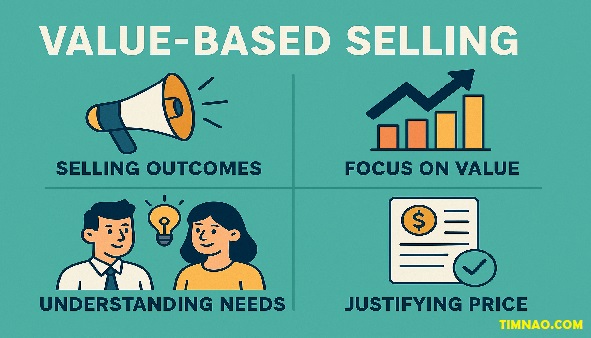
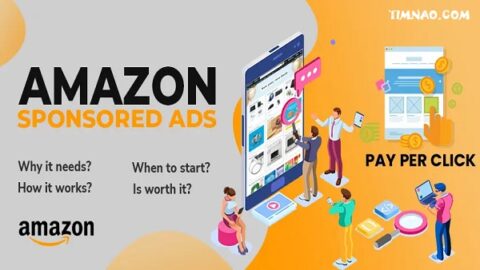
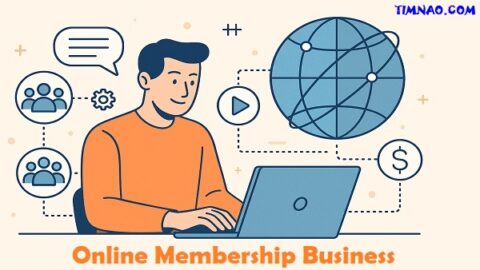

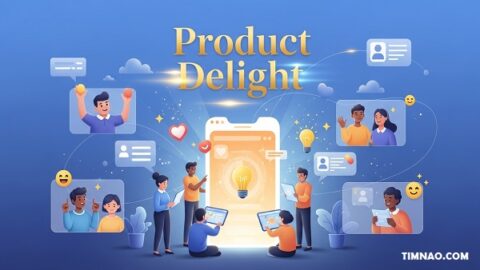
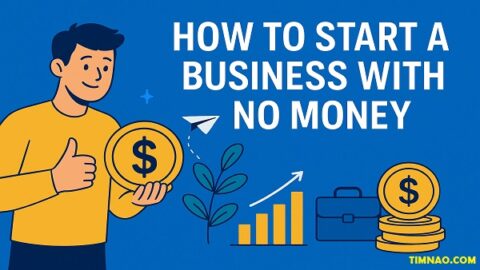
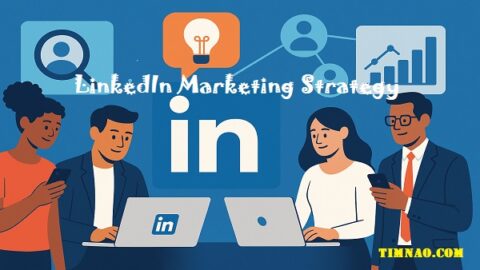


Nice post. I learn something totally new and challenging on websites
Good post! We will be linking to this particularly great post on our site. Keep up the great writing
You’re so awesome! I don’t believe I have read a single thing like that before. So great to find someone with some original thoughts on this topic. Really.. thank you for starting this up. This website is something that is needed on the internet, someone with a little originality!